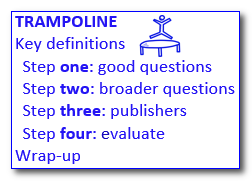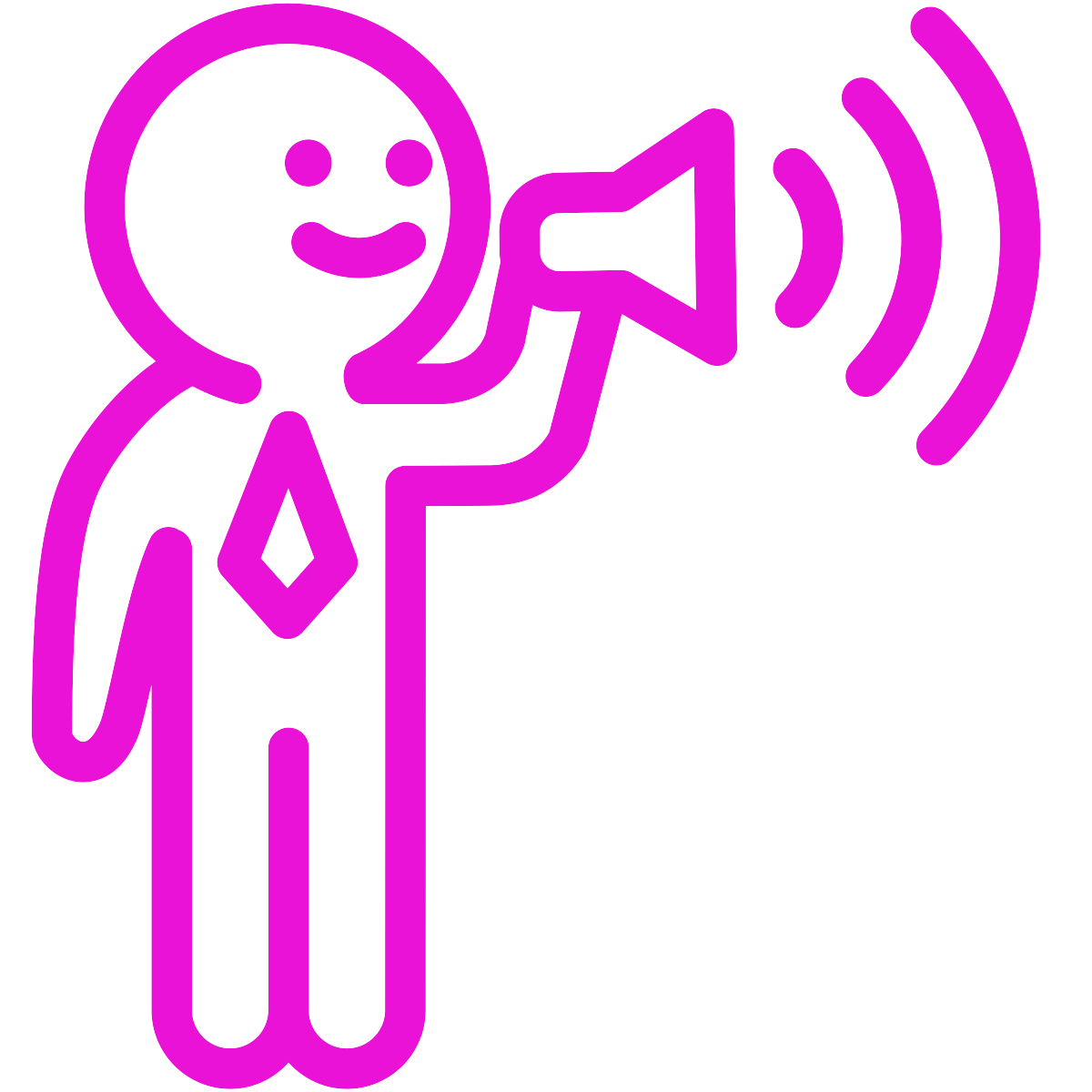Trampoline 11 of 12: Step four - Evaluate information
Published by Mark Bodnar <This series of posts is aimed at the current RADIUS Trampoline cohort – but will be of use to anyone learning to do secondary market research. Click on the table of contents to go to the first post.>
<This series of posts is aimed at the current RADIUS Trampoline cohort – but will be of use to anyone learning to do secondary market research. Click on the table of contents to go to the first post.>

Great! You’ve gathered mounds of evidence to refine and support your proposal!
It can be very tempting to breathe a sigh of relief and step away from the computer at this point. Please don’t – there’s one very important step left… It’s time to evaluate your information.
WHAT are you evaluating?
A common mistake is to focus on the container – the website, magazine, or report – rather than the facts & opinions in the container.
Think of the news stories we talked about earlier: A single article might mention numerous facts with some expert opinions sprinkled among them.
Each of those facts & opinions might come from a different source – and be of varying reliability, recency, and relevance to your needs. They all need to be evaluated separately.
WHO are you evaluating those facts & opinions for?
Yourself? Are you seeking to confirm your assumptions so that you can make good strategic decisions?
Others? Will this evidence be used to pitch an idea to supervisors or funders? What do you expect they know about the topic already?
If your audience is going to be making big decisions based on the evidence you present to them, can you predict the risks that will be on their minds? Money? Legal? Lost opportunities? Competitive advantage? Value for money compared to alternative solutions?
These risks may affect the depths to which your audience critiques your evidence, and they will expect you to be ready to directly address their concerns with solid information.

HOW are you evaluating? What are your criteria?
At the lowest level, you simply need to be sure the information you’ve found is true. See the following SFU Library guide for some tips on this skill that is especially important in our modern world: How to spot fake news: Identifying propaganda, satire, and false information
Weeding out false information is a good start, but it’s absolutely not enough. Remember when we defined Primary & Secondary Research? Your audience wishes all of your information was from your own primary research and therefore both current and completely on-topic.
You, however, have done secondary research and returned with information that is a bit old, likely on different cities or countries, and probably not perfectly and clearly connected to your goals.
If you’ve convinced yourself that your slightly old and slightly off-topic information is worth forming part of the foundation for your decision, can you convince your audience of the same thing?
Can you help them understand the Reliability, Recency, and Relevance of the information you have collected? Working through the 3 Rs of evaluation is a vital step in business research. Check out my guide to evaluating to learn more about applying the 3Rs.
That's it! All that's left is to >> Wrap-up!
– MarkB
~~~~~~
Mark Bodnar
Business & Economics Librarian
mbodnar@sfu.ca


 A common mistake when evaluating is to stop at the level of true vs. false.
A common mistake when evaluating is to stop at the level of true vs. false.